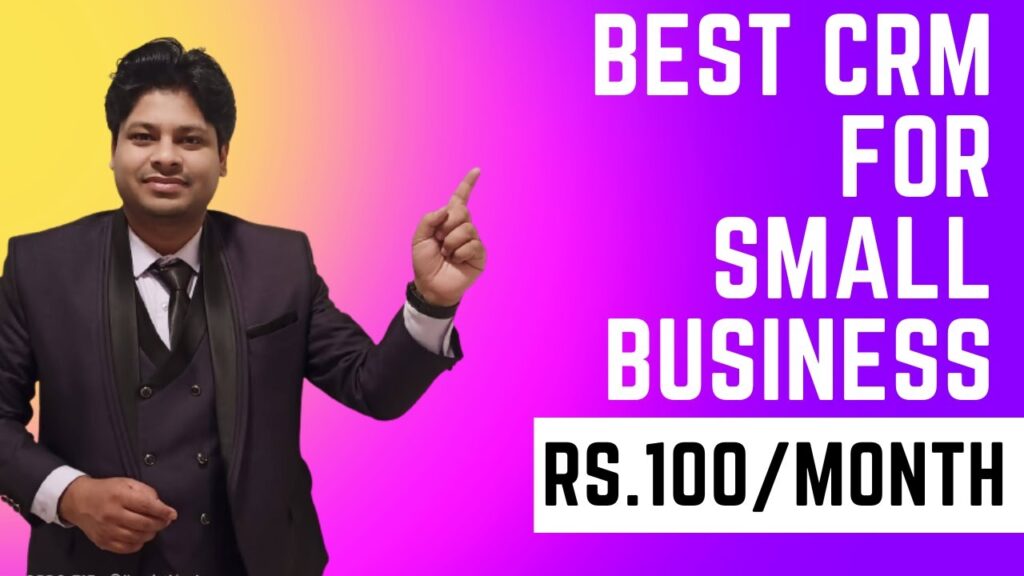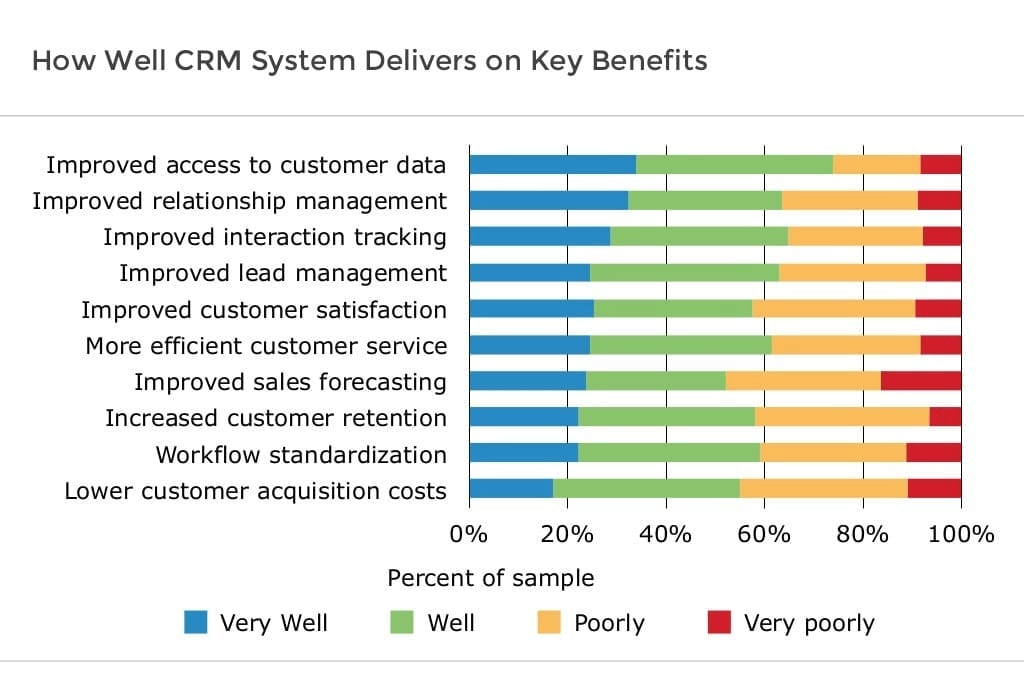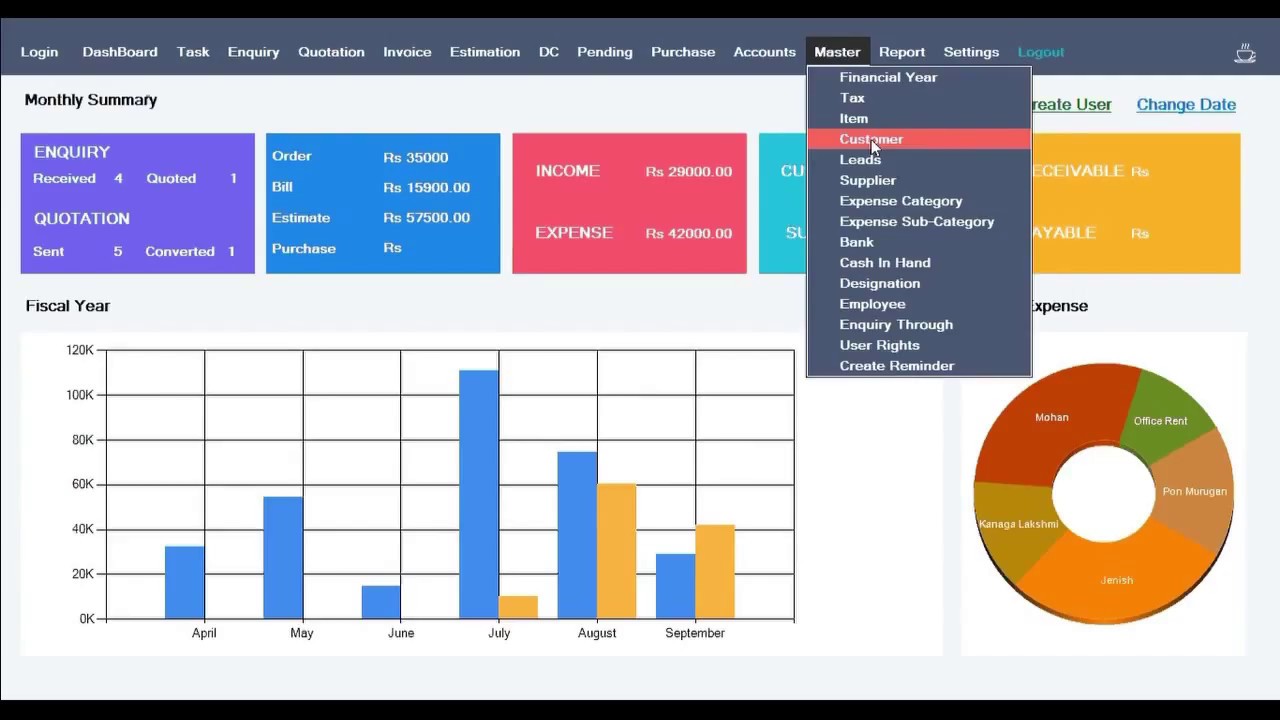
Small Business CRM Cost: Navigating the Pricing Landscape
Choosing a Customer Relationship Management (CRM) system is a pivotal decision for any small business. It can transform how you interact with customers, manage leads, and ultimately, boost your bottom line. But the question of “how much does a CRM cost?” often looms large. This comprehensive guide dives deep into the small business CRM cost, exploring various pricing models, hidden fees, and the factors that influence the overall investment. We’ll equip you with the knowledge to make an informed decision that aligns with your budget and business goals. Let’s get started!
Understanding the Different CRM Pricing Models
The CRM landscape offers a plethora of pricing models, each with its own set of pros and cons. Understanding these models is the first step toward finding the right CRM for your small business.
Subscription-Based Pricing (SaaS)
This is the most common pricing model, especially for cloud-based CRM systems. You pay a recurring fee, typically monthly or annually, to access the software. The cost is usually based on the number of users, the features included, and the storage capacity. This model is attractive because it offers predictable costs and eliminates the need for upfront investments in hardware or software licenses. However, it’s crucial to consider the long-term cost, especially as your business grows and you need to add more users or features.
- Pros: Predictable costs, no upfront investment, easy scalability.
- Cons: Recurring costs, potential for price increases, reliance on vendor.
Per-User Pricing
In this model, you pay a fee for each user who has access to the CRM system. This is a straightforward approach, making it easy to calculate your costs. However, it can become expensive if you have a large team or if you need to grant access to users who don’t actively use the system. Some vendors offer tiered pricing, where the cost per user decreases as you add more users.
Per-Contact Pricing
Some CRMs charge based on the number of contacts you store in the system. This model can be cost-effective for businesses with a large number of contacts but relatively few active users. However, it’s important to monitor your contact list to avoid exceeding your limit and incurring extra charges.
Tiered Pricing
This model offers different pricing tiers, each with a different set of features and a different price point. This allows you to choose a plan that best suits your needs and budget. As your business grows, you can upgrade to a higher tier to access more advanced features. Tiered pricing is common in SaaS CRM systems.
One-Time License Fees (On-Premise)
This model is less common for small businesses, as it involves purchasing a perpetual license to use the software. You pay a one-time fee upfront, and you own the software. However, you’ll typically need to pay additional fees for ongoing maintenance, support, and updates. This model requires a significant upfront investment and requires you to manage the software infrastructure yourself. It’s generally more suitable for larger enterprises with dedicated IT departments.
- Pros: Ownership of software, no recurring fees (initially).
- Cons: High upfront cost, responsibility for maintenance and updates, potential for obsolescence.
Factors That Influence Small Business CRM Cost
Several factors can significantly impact the overall cost of a CRM system. Understanding these factors will help you make a more informed decision and avoid any unpleasant surprises.
Number of Users
This is often the primary driver of cost, especially with per-user pricing models. The more users you need to accommodate, the higher your monthly or annual fees will be. Carefully assess how many users need access to the CRM and how frequently they’ll be using it.
Features and Functionality
The features you need will also influence the cost. Basic CRM systems with limited functionality are typically less expensive than those with advanced features like marketing automation, sales forecasting, and custom reporting. Evaluate your business needs and choose a CRM that offers the features you require without paying for those you don’t.
Storage Capacity
If you store a large number of contacts, documents, or other data within your CRM, you’ll need sufficient storage capacity. Some CRM providers offer different storage tiers, with the cost increasing as your storage needs grow. Assess your storage requirements to avoid exceeding your limit and incurring extra charges.
Integration Capabilities
If you need to integrate your CRM with other software applications, such as email marketing platforms, accounting software, or e-commerce platforms, consider the integration capabilities of the CRM. Some CRM systems offer native integrations with popular applications, while others require you to use third-party connectors or APIs, which can add to the overall cost.
Level of Support and Training
The level of support and training provided by the CRM vendor can also impact the cost. Some vendors offer basic support as part of their standard plans, while others offer premium support options with faster response times and dedicated account managers. Training is essential to ensure that your team can effectively use the CRM. Consider the cost of training materials, online courses, and on-site training sessions.
Customization and Implementation Costs
Customizing your CRM to meet your specific business needs can add to the cost. This may involve hiring a consultant to configure the system, developing custom reports, or integrating it with other applications. The implementation process can also involve data migration, which can be time-consuming and costly. Factor in these costs when evaluating different CRM options.
Add-ons and Third-Party Apps
Many CRM systems offer add-ons and integrations with third-party applications to extend their functionality. While these can enhance the value of your CRM, they can also increase the overall cost. Consider the cost of add-ons and third-party apps when making your decision.
Comparing Popular CRM Systems for Small Businesses
Let’s take a look at some popular CRM systems and their pricing models, so you have a better understanding of what to expect.
Zoho CRM
Zoho CRM offers a range of plans, from a free plan for up to three users to paid plans with more features and functionality. Their pricing is based on the number of users and the features included. Zoho is known for its affordability and extensive feature set, making it a popular choice for small businesses. Their plans are generally cost-effective.
- Free Plan: Limited features, up to 3 users.
- Paid Plans: Tiered pricing based on features and users.
- Key Features: Sales force automation, marketing automation, customer support, and analytics.
HubSpot CRM
HubSpot CRM offers a free CRM with unlimited users and a generous set of features. They also offer paid plans with more advanced marketing, sales, and customer service tools. HubSpot’s pricing is based on the number of contacts and the features you need. The free version is a great starting point, and the paid plans are scalable as your business grows. HubSpot is renowned for its user-friendliness.
- Free CRM: Unlimited users, basic features.
- Paid Plans: Based on contacts and features (Marketing, Sales, Service Hubs).
- Key Features: Contact management, deal tracking, email marketing, and reporting.
Salesforce Essentials
Salesforce Essentials is designed specifically for small businesses. It offers a simplified version of Salesforce’s powerful CRM platform, with a focus on ease of use and affordability. Their pricing is per user, with different plans offering different features. Salesforce is a robust platform, but Essentials provides a more accessible entry point for small businesses. This option can be more expensive but offers a lot of power.
- Pricing: Per-user pricing, tiered based on features.
- Key Features: Contact management, sales process automation, reporting, and integration with other Salesforce products.
Pipedrive
Pipedrive is a sales-focused CRM that’s known for its visual pipeline management and ease of use. It offers a per-user pricing model, with different plans providing different features. Pipedrive is a great choice for businesses that prioritize sales management. The pricing is straightforward and competitive.
- Pricing: Per-user pricing, based on features.
- Key Features: Sales pipeline management, deal tracking, email integration, and reporting.
Freshsales (Freshworks CRM)
Freshsales offers a variety of plans, including a free plan for a limited number of users. Their pricing is based on the number of users and the features included. Freshsales is known for its user-friendly interface and affordability. It’s a strong contender for small businesses.
- Free Plan: Limited features, up to 3 users.
- Paid Plans: Tiered pricing based on features and users.
- Key Features: Sales automation, contact management, and integrated telephony.
Important Note: Pricing information is subject to change. Always visit the CRM provider’s website for the most up-to-date pricing details.
Hidden Costs to Watch Out For
Beyond the base price, there are often hidden costs that can significantly increase the overall cost of your CRM system. Being aware of these potential expenses can help you budget more effectively.
Implementation Costs
Implementing a CRM system can involve significant costs. These include data migration costs (transferring data from your existing systems), customization costs (tailoring the CRM to your specific needs), and consulting fees (if you hire a consultant to assist with the implementation). These costs can vary widely depending on the complexity of your implementation and the size of your business. Data migration can be a time consuming process that requires expertise.
Training Costs
Training your team to effectively use the CRM is crucial for its success. Training costs can include the cost of training materials, online courses, and on-site training sessions. These costs can add up, especially if you have a large team. Adequate training prevents errors and maximizes the return on your CRM investment.
Integration Costs
Integrating your CRM with other applications, such as email marketing platforms, accounting software, or e-commerce platforms, can involve additional costs. These costs can include the cost of third-party connectors or API fees. Complex integrations can require specialized expertise, which can further increase the cost.
Data Storage Costs
As your business grows, your data storage needs will likely increase. Some CRM providers charge extra for exceeding your storage limit. Be sure to assess your storage requirements and factor in potential data storage costs.
Support and Maintenance Costs
Some CRM vendors offer paid support plans with faster response times and dedicated account managers. These support plans can add to the overall cost. Also, factor in the cost of ongoing maintenance, such as software updates and bug fixes.
Add-on Costs
Many CRM systems offer add-ons and integrations with third-party applications to extend their functionality. While these can enhance the value of your CRM, they can also increase the overall cost. Consider the cost of add-ons and third-party apps when making your decision.
Calculating the Return on Investment (ROI) of a CRM
Investing in a CRM system is a significant financial commitment. It’s essential to calculate the potential return on investment (ROI) to justify the expense and ensure that the CRM is delivering value to your business.
Identify Key Metrics
Before you can calculate the ROI, you need to identify the key metrics that you want to improve with your CRM. These metrics will vary depending on your business goals, but common metrics include:
- Increased Sales Revenue: Track the increase in sales revenue generated by your CRM.
- Improved Sales Cycle Length: Measure the reduction in the time it takes to close a deal.
- Higher Conversion Rates: Track the increase in the percentage of leads that convert into customers.
- Reduced Customer Acquisition Cost (CAC): Measure the decrease in the cost of acquiring a new customer.
- Increased Customer Retention Rate: Track the increase in the percentage of customers who stay with your business.
- Improved Customer Satisfaction: Measure the increase in customer satisfaction scores.
- Increased Productivity: Measure the time saved by your sales and marketing teams.
Calculate the Costs
Accurately calculate all of the costs associated with your CRM. This includes the initial setup costs, the ongoing subscription fees, the cost of training, and any other expenses related to the CRM.
Calculate the Benefits
Quantify the benefits of your CRM by measuring the improvements in the key metrics you identified. For example, if your CRM helps you increase sales revenue by 10%, calculate the monetary value of that increase. If your CRM helps you reduce your sales cycle length by 20%, calculate the time and cost savings associated with that reduction.
Calculate the ROI
Use the following formula to calculate the ROI:
ROI = ((Benefits – Costs) / Costs) * 100
For example, if your CRM costs $5,000 per year and generates $10,000 in additional revenue, your ROI would be: ((10,000 – 5,000) / 5,000) * 100 = 100%. A positive ROI indicates that your CRM is delivering value to your business.
Ongoing Monitoring and Analysis
Calculating the ROI is not a one-time activity. Continuously monitor your key metrics and track the performance of your CRM. Analyze the data to identify areas for improvement and make adjustments as needed. This will help you maximize the ROI of your CRM investment.
Tips for Reducing CRM Costs
While a CRM system is a worthwhile investment, you can take steps to reduce the overall cost without sacrificing functionality.
Choose the Right Plan
Carefully evaluate your business needs and choose a CRM plan that offers the features you require without paying for those you don’t. Don’t overspend on features that you won’t use. Start with a basic plan and upgrade as your needs evolve.
Negotiate with Vendors
Don’t be afraid to negotiate with CRM vendors. You may be able to negotiate a lower price or get additional features included in your plan. Ask about discounts for long-term contracts or paying annually.
Leverage Free Trials and Demos
Take advantage of free trials and demos to test out different CRM systems before making a commitment. This will allow you to evaluate the features, functionality, and user-friendliness of each system. Test out the free CRM plan for as long as it meets your needs.
Optimize Your Data
Keep your contact list clean and up-to-date to avoid exceeding your storage limits and incurring extra charges. Regularly remove duplicate contacts and inactive leads. This will also improve the accuracy of your data and the effectiveness of your CRM.
Train Your Team Effectively
Ensure that your team is properly trained to use the CRM. This will improve their productivity and reduce the risk of errors. Encourage your team to use the CRM consistently to get the most out of it. Consider internal training sessions.
Use Integrations Wisely
Choose integrations that add value to your CRM without incurring unnecessary costs. Prioritize integrations that are essential for your business operations. Evaluate the cost of each integration and ensure that it provides a good return on investment.
Consider Open-Source CRM Options
If you have the technical expertise, consider open-source CRM options. These systems are often free to use, but you’ll need to manage the software infrastructure yourself. Open-source CRM can save you money on subscription fees, but they may require more technical support.
Making the Right Choice: A Summary
Choosing the right CRM system for your small business involves careful consideration of your needs, budget, and goals. By understanding the different pricing models, the factors that influence cost, and the hidden expenses, you can make an informed decision that delivers a strong return on investment. Remember to:
- Assess Your Needs: Identify your business goals and the features you need in a CRM.
- Set a Budget: Determine how much you can afford to spend on a CRM.
- Research Different CRM Systems: Compare the features, pricing, and reviews of different CRM systems.
- Take Advantage of Free Trials and Demos: Test out different CRM systems before making a commitment.
- Calculate the ROI: Determine the potential return on investment of a CRM to justify the expense.
- Negotiate with Vendors: Try to get the best possible price and terms.
By following these steps, you can find the perfect CRM system to streamline your sales, marketing, and customer service efforts, ultimately driving growth and success for your small business. The right CRM is a powerful tool, so choose wisely, and don’t be afraid to ask questions!


